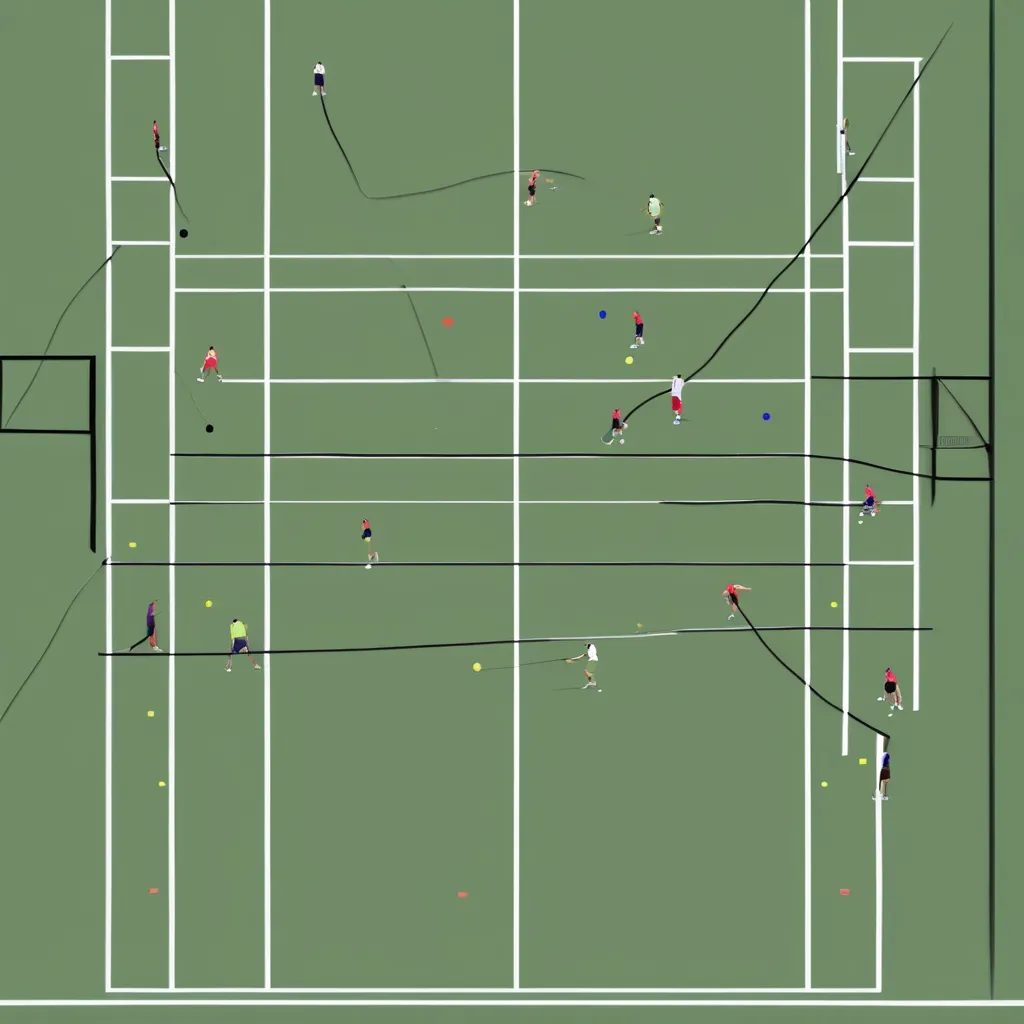Table of Contents
Pickleball Singles Rules: Introduction to Singles Play
Playing pickleball singles offers a different dynamic compared to doubles, requiring more movement, strategy, and individual skill. Understanding the specific rules for singles play is essential for mastering the game and competing effectively. This guide covers comprehensive pickleball singles rules, including scoring, positioning, and strategies.
Basic Pickleball Singles Rules
The fundamental rules of pickleball singles are similar to doubles, with a few key differences:
- Scoring: Points are scored only by the serving player. Games are typically played to 11 points, and a player must win by 2 points.
- Serve: The serve must be made underhand and diagonally cross-court. The server starts from the right side of the court if their score is even and from the left side if their score is odd.
- Service Sequence: There is only one serve in singles, unlike doubles where each team has two serves. The server continues to serve until they lose a rally.
- Non-Volley Zone: The non-volley zone, also known as the kitchen, applies in singles as well. Players cannot volley the ball while standing in the kitchen.
- Faults: Faults occur if the ball lands out of bounds, does not clear the net, is volleyed from within the kitchen, or is not served correctly.
 Pickleball Singles Rules
Pickleball Singles Rules
Pickleball Singles Scoring
Scoring in pickleball singles follows these guidelines:
- Points: Points are scored only by the serving player. Each successful rally won by the server earns them one point.
- Game Point: Games are typically played to 11 points, and a player must win by a margin of 2 points. Some tournaments may play to 15 or 21 points.
- Calling the Score: The server calls the score before each serve, stating their score first, followed by the opponent’s score.
Serving Rules for Singles
Understanding the serving rules is crucial for effective singles play:
1. Serve Position
The server stands behind the baseline and serves diagonally to the opponent’s service court. If the server’s score is even, they serve from the right side; if odd, they serve from the left side.
2. Serve Technique
The serve must be underhand, with the paddle contacting the ball below the waist. The ball must travel diagonally and clear the non-volley zone to be a legal serve.
3. Service Faults
A service fault occurs if the serve lands out of bounds, does not clear the net, or is served incorrectly. Faults result in a side-out, and the serve goes to the opponent.
Strategies for Pickleball Singles
Effective strategies can significantly enhance your singles play:
1. Control the Center
Controlling the center of the court allows you to reach shots more easily and maintain a strong position. Stay centered to cover the entire court efficiently.
2. Use Deep Serves and Returns
Serving and returning the ball deep into the opponent’s court pushes them back, giving you more time to react and control the rally.
3. Implement Drop Shots
Drop shots can disrupt your opponent’s rhythm and force them to move forward quickly, creating opportunities for you to control the rally.
4. Vary Your Shots
Mixing up your shots keeps your opponent guessing and prevents them from settling into a pattern. Use a combination of deep shots, drop shots, and angles to keep them off balance.
5. Maintain Fitness
Singles play requires more movement and stamina. Regular fitness training can help improve your endurance, speed, and agility on the court.
Common Mistakes in Pickleball Singles
Avoid these common mistakes to improve your singles game:
1. Poor Positioning
Stay centered and avoid getting too close to the sidelines. Good positioning allows for better coverage and quicker reactions.
2. Overhitting
Avoid hitting the ball too hard, which can lead to errors. Focus on control and placement rather than power.
3. Ignoring the Kitchen
Don’t neglect the importance of the kitchen in singles play. Use it to your advantage with well-placed drop shots and volleys.
4. Inconsistent Serves
Work on making your serves consistent and accurate. Faulty serves can give your opponent easy points.
5. Lack of Strategy
Develop and implement a game plan. Playing without a strategy makes it easier for your opponent to predict and counter your moves.
Resources for Further Learning
For more detailed information on pickleball singles rules and strategies, explore these valuable resources:
- Visit the USA Pickleball Association (USAPA) for comprehensive guides and official rules.
- Explore instructional videos and articles on Pickleball Central.
- Check out detailed reviews and tutorials on Pickleball Portal.
- Learn from top players and coaches on PickleballMAX.
Conclusion
Understanding and mastering pickleball singles rules is essential for improving your game and competing effectively. By familiarizing yourself with the scoring system, serving rules, and strategic approaches, you can enhance your singles play and achieve better results on the court. Use these guidelines to build a strong foundation and elevate your pickleball skills.
Frequently Asked Questions
- What are the basic rules for pickleball singles? The basic rules include scoring points only by the server, serving underhand diagonally, following the non-volley zone rules, and adhering to service faults and side-out rules.
- How is scoring different in singles compared to doubles? In singles, points are scored only by the serving player, and the server continues to serve until they lose a rally. The first player to reach 11 points (with a 2-point margin) wins.
- What are effective strategies for singles play? Effective strategies include controlling the center of the court, using deep serves and returns, implementing drop shots, varying your shots, and maintaining fitness for better endurance and agility.
- How important is positioning in singles? Proper positioning is crucial in singles to ensure better court coverage and quicker reactions. Staying centered allows for efficient movement and control.
- Where can I learn more about pickleball singles rules and strategies? For more detailed information, visit resources like the USA Pickleball Association, Pickleball Central, Pickleball Portal, and PickleballMAX for comprehensive guides and tutorials.